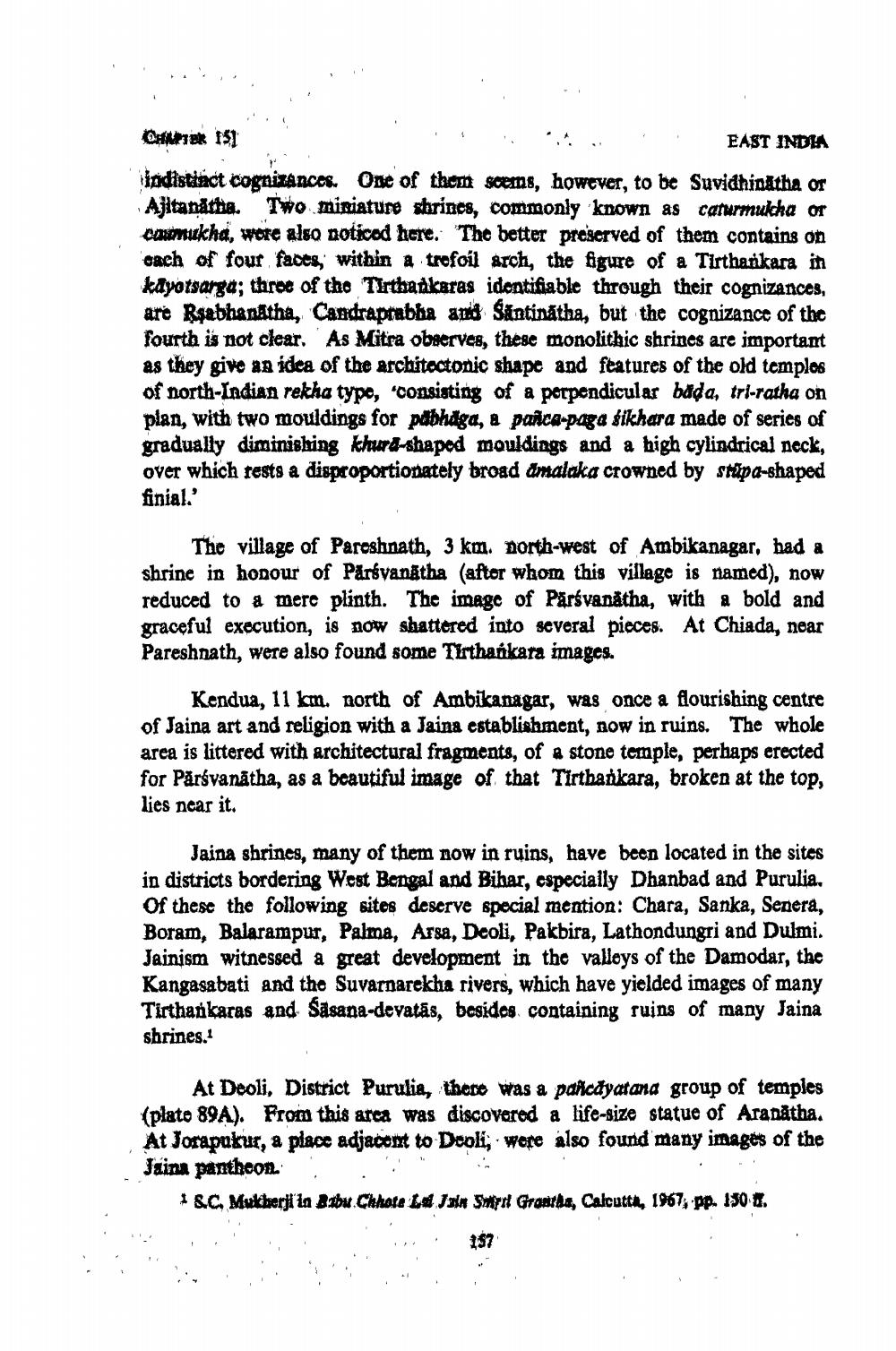________________
CHAPTER 1SI
. . EAST INDIA Indistiäct cognizances. One of them soms, however, to be Suvidhin&tha or Ajitanatha. Two miniature shrines, commonly known as caturmukha or carmukha, wote also noticed here. The better preserved of them contains on gach of four faces, within a trefoil arch, the figure of a Tirthankara in kdyotsarga; three of the Tirthadkaras identifiable through their cognizances, are Rabhanatha, Candraprabha and Santinátha, but the cognizance of the fourth is not clear. As Mitra observes, these monolithic shrines are important as they give an idea of the architectonic shape and features of the old templos of north-Indian rekha type, 'consisting of a perpendicular bada, tri-ratha on plan, with two mouldings for påbhaga, a panica-paga sikhara made of series of gradually diminishing khurd-shaped mouldings and a high cylindrical neck, over which rests a disproportionately broad Amalaka crowned by stúpa-shaped finial.'
The village of Paroshinath, 3 km. north-west of Ambikanagar, had a shrine in honour of Parsvanātha (aftor whom this village is named), now reduced to a merc plinth. The image of Pärsvanátha, with a bold and graceful execution, is now shattered into several pieces. At Chiada, near Pareshnath, were also found some IIrthaákara images.
Kendua, 11 km. north of Ambikanagar, was once a flourishing centre of Jaina art and religion with a Jaina establishment, now in ruins. The whole area is littered with architectural fragments, of a stone temple, perhaps erected for Pårsvanátha, as a beautiful image of that Tirthankara, broken at the top, lies near it.
Jaina shrines, many of them now in ruins, have been located in the sites in districts bordering West Bengal and Bihar, especially Dhanbad and Purulia. Of these the following sites deserve special mention: Chara, Sanka, Senera, Boram, Balarampur, Palma, Arsa, Dcoli, Pakbira, Lathondungri and Dulmi. Jainism witnessed a great development in the valloys of the Damodar, the Kangasabati and the Suvarnarekha rivers, which have yielded images of many Tirthankaras and Sasana-devatás, besides containing ruins of many Jaina shrines.
At Deoli, District Purulia, there was a pancayatana group of temples (plate 89A). From this area was discovered a life-size statue of Aranåtha. At Jorapaku, a place adjacent to Deoli; were also found many images of the Jaina pantheon. . .
8C Mukkerfl'la Bubu Chhote L. Jan Sw Grantha, Calcuttu, 1967pp. 150 1.




